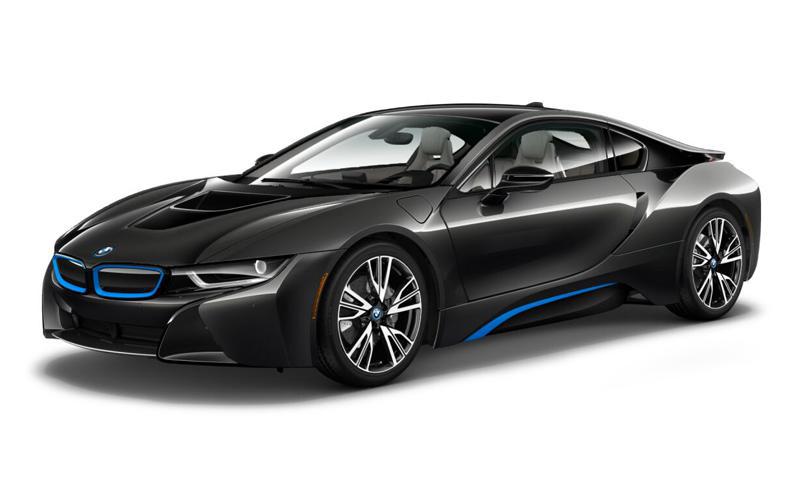
Ten Least Reliable Cars – Consumer Reports
Ten Least Reliable Cars
One of the main reasons people buy a brand-new car is the promise of a no-hassle ownership practice, free from the drip-drip-drip of service problems that set in as cars age. Nonetheless, our comprehensive annual auto reliability survey tells us that some buyers will be taking their brand-new car back to the dealer’s service department sooner and more often than other car buyers will.
The models featured here are the ten least reliable vehicles based on our two thousand sixteen Annual Auto Survey.
Our survey takes a deep dive into the numerous things that can go wrong with a vehicle. We investigate seventeen trouble areas, from nuisances—such as squeaky brakes and violated interior trim—to major bummers, such as out-of-warranty transmission repairs or trouble with four-wheel-drive systems. We weight the severity of each type of problem to create a Predicted Reliability Score for each vehicle. That score is then combined with data collected from our track testing, as well as our owner-satisfaction survey results and safety data, to calculate each test vehicle’s Overall Score.
Based on that analysis, these models are the least reliable. They are introduced in rank order, counting down to the least reliable model, the Cadillac Escalade. For more details on the models’ reliability concerns, click through to their respective model pages.
Guide to Car Reliability
Fresh and used car reliability trends and ratings
Fiat 500L*
Price as tested $24,595
Trouble catches sight of Slipping or lock-up transmission, power equipment, drive system, in-car electronics
This Italian confection feels undercooked and has several significant flaws. It earned a dismal road-test score, thanks in part to a stiff rail, plane seats, and an odd driving position. No surprise, proprietor satisfaction is also low—meaning a strong percentage of owners wish they hadn’t bought this hatchback. The 500L also has one of the worst reliability scores among all fresh cars in our latest survey. If that still isn’t enough to dissuade you, it scored a Poor in the Insurance Institute for Highway Safety’s small-overlap frontal crash test. To its credit, this quasi-wagon responds anxiously in turn, treats securely at its limit, and has a roomy cabin. But it would take more than those virtues for this to earn a place on a brainy shopper’s list.
Ford Fiesta
Price as tested $16,595-$24,985
Trouble catches sight of Clutch replacement, rough-shifting or slipping transmission, noises and leaks, power equipment
This subcompact has agile treating that makes it joy to drive, as well as a supple, managed rail. Interior fit and finish and equipment levels are among the best of the class, and the cabin is relatively quiet. But the rear seat is very cramped. Our tested 120-hp, 1.6-liter Fiesta with the five-speed manual delivered excellent fuel economy but felt sluggish. A six-speed automated manual tends to cause the car to stumble in stop-and-go traffic. Other choices include a 1.0-liter, three-cylinder turbo and the sporty Fiesta ST that is truly a treat to drive if your kidneys can treat the stiff rail. Sync three has substituted the MyFord Touch infotainment system.
Chevrolet Tahoe/GMC Yukon
Price as tested $60,100
Trouble catches sight of Steering stimulations, power equipment, in-car electronics
The Tahoe and Yukon have luxurious and quiet interiors, decent second- and third-row seats, and available features such as blind-spot monitoring and cross-traffic alert. Beyond that, fuel economy from the Five.3-liter V8 and six-speed automatic is sixteen mpg. But the engine doesn’t feel responsive enough in everyday driving. The touch-screen infotainment system is effortless to use. The rail is stiff, albeit the Magnetic Rail Control suspension improves rail convenience and treating response and capability. Decently tooled versions can tow 8,500 pounds. But car-based SUVs have better treating and are more efficient. Lane-keeping assist is now available.
Ram 2500
Trouble catches sight of Steering stimulations, emissions controls and sensors, 4WD components, power equipment
The Ram two thousand five hundred skirts the rough and tumble that typically come with a heavy-duty truck. Tho’ still stiff, with a coil-spring rear suspension it rails in a relatively civilized manner and better than contesting HD trucks. Chrysler’s powerful 383-hp, Five.7-liter V8 is the standard engine, but you can opt for the torque-rich
6.7-liter Cummins turbodiesel Six. This strong-pulling diesel engine is not available on the Ram 1500, which employs a different diesel. We got fourteen mpg overall with the Cummins diesel. The truck lends itself lightly to fifth-wheel towing and has a Jake brake for descending long downhills. It can also be outfitted with a snow-plow prep kit. The Laramie version is nicely trimmed inwards, but contending with the high step-in height is a chore. The team cab’s rear seat is very roomy. The Ram two thousand five hundred has two rear cameras: one for backing up and another for monitoring what’s in the bed.
Tesla Model X*
Presently in test.
Trouble catches sight of Falcon-wing doors, locks and latches, power equipment, in-car electronics, climate system
The electric-powered Model X is more showy than practical. It features rear doors that open up and out of the way, providing effortless access to rear seats. But those massive doors take their time to open and close. The hefty windshield extends up and over the front-seat occupants, making the cabin feel airy and futuristic. Buyers can opt for five-, six-, or seven-passenger seating configurations, but unlike every other SUV, the 2nd row doesn’t fold, which compromises utility. Like the S, the Model X is very quick and treats well. Rail convenience and noise isolation aren’t as good as in the S, however. The 90-kWh version we tested had a realistic 230-mile range. Note alert below.